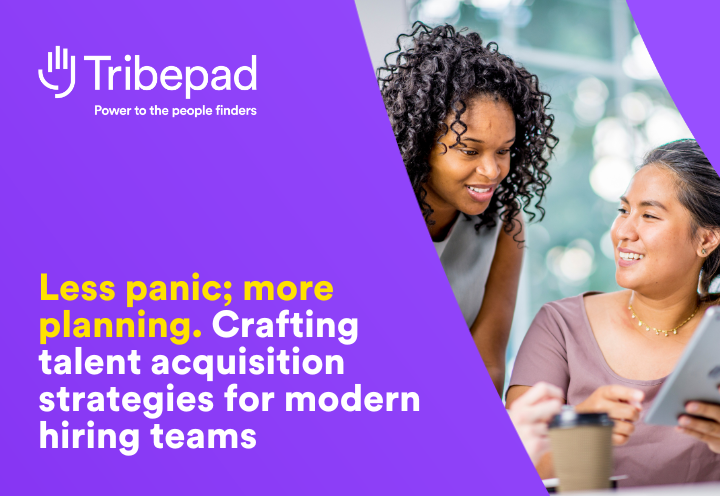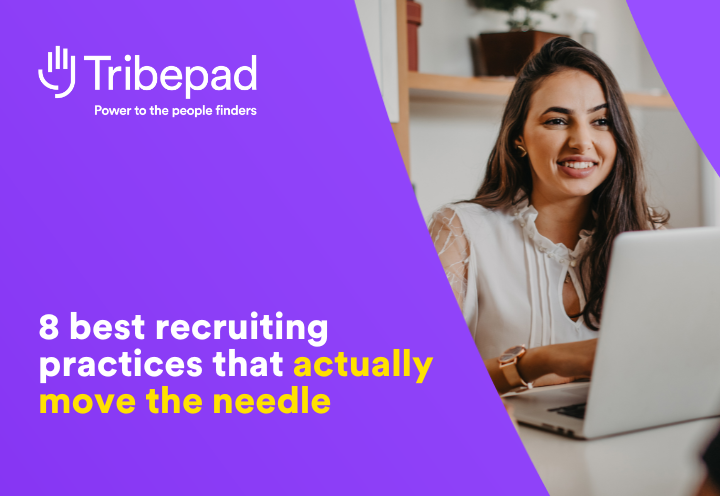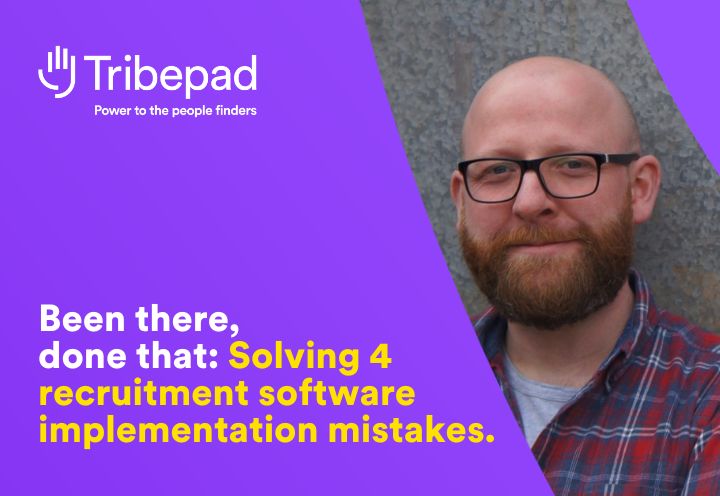Whether you’re dipping a toe in the water or racing to a strict contract-end deadline, a recruitment software demo should (hopefully) leave you feeling confident and excited about the future.
Let’s talk about how you get there.
First, four things to attend your demo armed with.
Then 51 questions to ask vendors, to pin down your provider-of-choice.
Four things to bring to your recruitment software demo
To get the most from your recruitment software demo, don’t turn up unprepared. (Yes, even if you’re super early in your research cycle.). You don’t need a comprehensive, concrete requirements list but some idea where you are and where you’re going will help you make better decisions.
Four things to bring:
- A sketch of your current recruitment process: Good vendors won’t just try to sell you a product. They’ll assess whether they can actually support your processes, with the flexibility to adapt to you (not force you to adapt to them). Today and as you evolve.
- An idea of your current challenges: what are we solving for here? What’s the pain point? Ideally a demo should be a second step after a shorter discovery call, so vendors can tailor the demo specifically to your needs.
- A wishlist of your must-haves and nice-to-haves: what’s a dealbreaker versus what’s an “oooh that sounds nice?” At the most fundamental, you need to know vendors can do the non-negotiable stuff.
- An open mind: market research platform Wynter find that many organisations choose their favourite vendor before they even demo. It’s normal to have an idea who you like. But open minds open doors.
51 questions to ask on your talent SaaS demo
To really get under the skin of demoing talent tech providers, ask questions covering functionality, usability, scalability, performance, value, implementation, and support. Aim to leave your sales demo with a clear idea of next steps, both from your side and the vendors’, to keep momentum up.
Functionality
The first priority of a software demo is to assess whether this recruitment platform actually does what you need. Come back to the requirements list you sketched out. Think of future adaptability too – you don’t want to be stuck with a rigid system that works in one precise way.
1. How does this software meet our non-negotiable priorities?
2. How much of our nice-to-have wishlist does this cover?
3. How does this software work for how we work?
4. How much can this software flex if our ways of working change?
5. How is your system different from competitors?
Some of the most common priorities we see:
6. How does this ATS improve the candidate experience?
7. How does this ATS prioritise inclusivity and further ED&I goals?
8. How does this ATS cope with high-volume recruitment?
9. How does this ATS support recruitment marketing?
10. How much does this platform automate?
11. Can we track our key recruitment metrics easily?
12. Does the platform include CRM functionality?
13. Does the platform include onboarding functionality?
Usability and experience
UX should be a major priority when buying recruitment software. If it’s clunky, slow, and ugly, you’re likely to face issues with adoption.
14. How intuitive is the UX for recruiters, managers, and candidates?
15. Is the platform mobile-friendly?
16. Can we see a walkthrough of typical workflows?
17. How do hiring managers use the system?
18. How easily can we configure dashboards, reports, and access?
19. How easily and fast can we make changes?
Integrations
Most organisations today build a specialist tech stack rather than rely on one broad but narrow tool. That puts a premium on software that plays well with others, to ensure you can keep using your other important tools without disruption.
20. Does this platform integrate with our existing HR and people tools?
21. What job boards and social media platforms does it connect with?
22. What’s the cost and process for custom integrations?
23. What integrations could further improve our process?
Performance and security
Performance and security due diligence is critical to protect your organisation from risk. Prioritising these questions upfront feeds into your business case and ensures you’ve got all your ducks in a row if you want to move forwards.
24. How does the platform perform during application surges?
25. What’s your uptime guarantee and reliability track record?
26. What security measures protect candidate and company data?
27. Does the platform help us stay GDPR-compliant?
28. How regularly is our data backed up?
29. What happens to our data if we leave?
Pricing and ROI
It’s useful to come to your demo with an indicative idea of the budget you’re playing with, even if you’re still building your business case.
30. How much does the platform cost?
31. Are there any hidden costs?
32. How does the pricing evolve as we grow?
33. What ROI can we expect?
Customer base
Some recruitment software is one-size-fits-all while other vendors have specialist expertise solving recruitment challenges in given sectors. Use your demo to understand where your providers’ expertise lies.
Tribepad brings specialist functionality across:
34. Which customers do you support with challenges like ours?
35. Can you put us in touch with other customers directly?
36. Do you have case studies from organisations like ours?
Implementation and support
Implementation is one of recruiters’ biggest fears recruiters about buying new recruitment software. Tackle this head-on and upfront. If you have a go-live date in mind already – because your old contract is ending, for instance – that’s helpful to communicate.
37. What’s the implementation process?
38. How long does implementation take?
39. How much internal resource will we need?
40. What ongoing support and training do you provide?
Read more:
Our guide to implementing Tribepad Pro
Our guide to implementing Tribepad Gro
Overcoming common implementation bottlenecks
Scalability and future-proofing
When you choose recruitment software, you’re investing for – at least – the length of your contract. And hopefully much longer. Choosing a provider who evolves gives you the best chance of a future-proof partnership that lasts many years to come.
41. How would the platform handle us growing?
42. Do you support multi-brand and multi-regional recruitment?
43. What future developments are on your product roadmap?
44. How is your roadmap defined and can we suggest priorities?
45. How often is your software updated and how do you communicate that?
46. How are you adapting to AI?
Business buy-in and next steps
Choosing new recruitment software can be a complex, convoluted process. It’s helpful to understand vendors’ picture of what comes next, and the support they’ll offer you. And to communicate your processes to vendors too, including any red tape you’re anticipating.
47. What do you need from us to move forwards?
48. Can we have more demos for different team members?
49. Can you support us with preparing the business case?
50. Can you support us with procurement frameworks like G-Cloud?
51. Can we have a test environment or sandbox to try out the platform?
52. How can you help us navigate potential procurement challenges?
Tribepad is the trusted tech ally to smart(er) recruiters everywhere. Combining ATS, CRM, Video Interviewing, and Onboarding, our talent acquisition software is a springboard for fairer, faster, better recruitment for everyone.
Trusted by organisations like the BBC, Tesco, NHS Professionals, and Subway, 30-million people in 16 languages use Tribepad.
Book a demo with Tribepad today and ask us all these questions 👀




